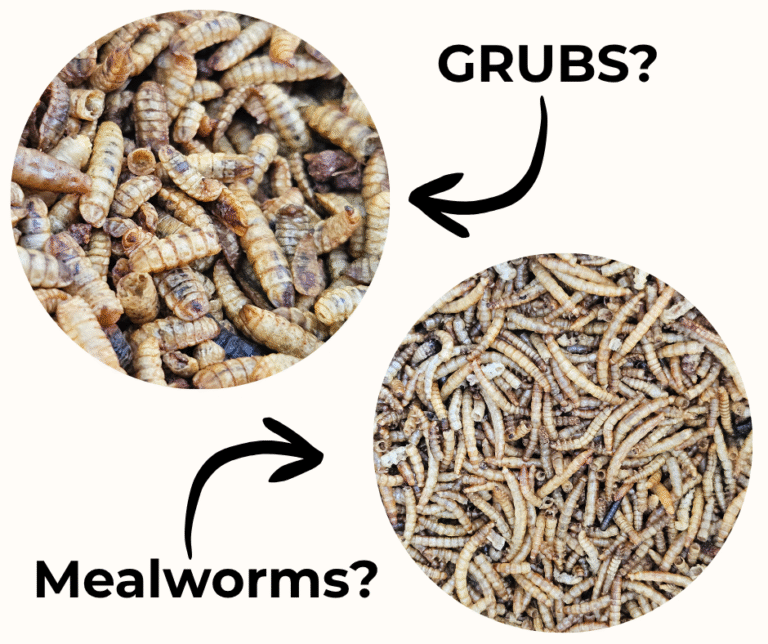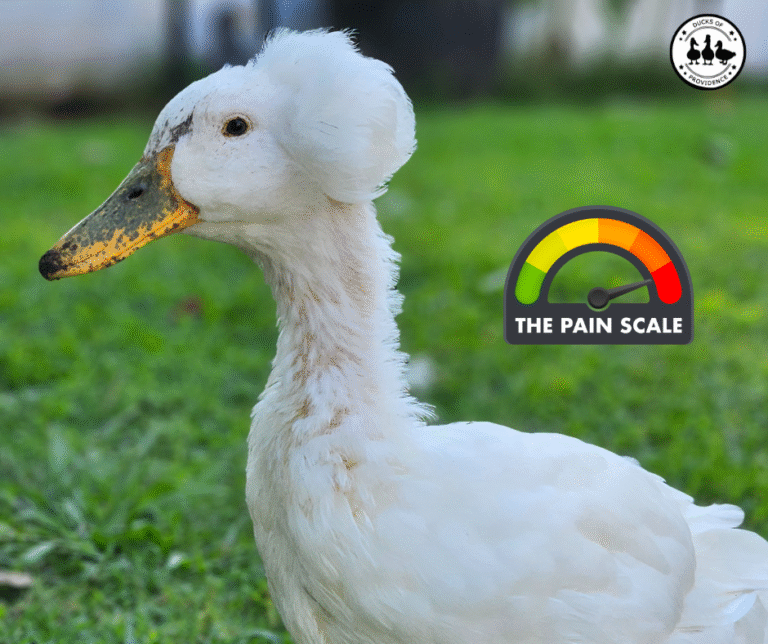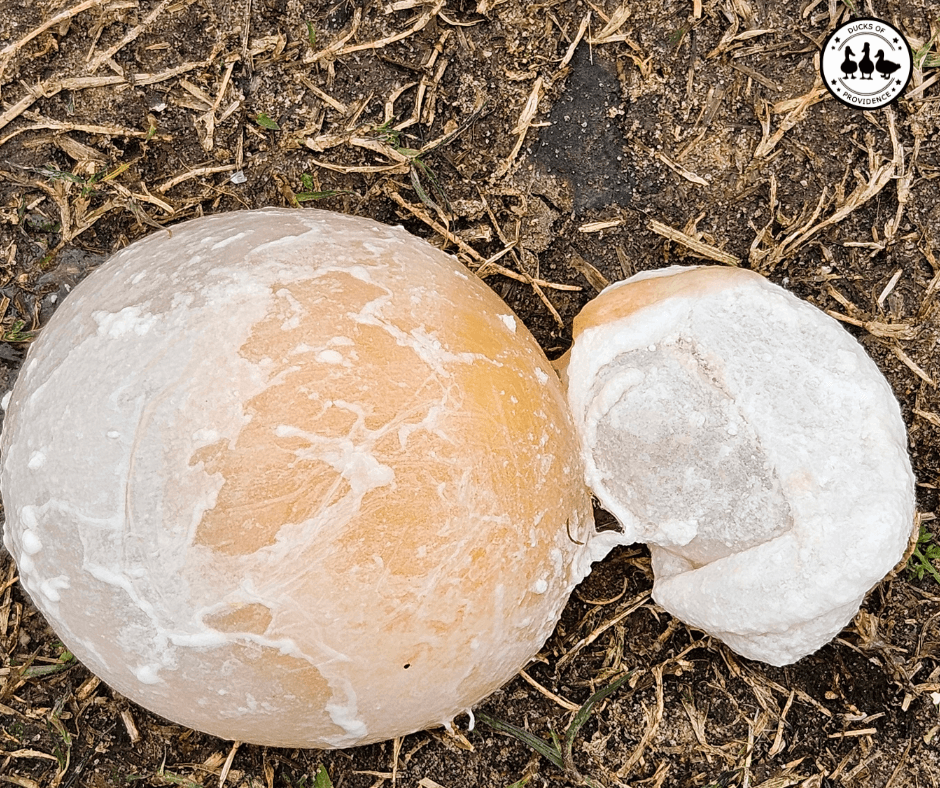
Reproductive Issues in Ducks: What They Are, Why They Happen, and How to Help
Ducks have become increasingly popular as pets, and we can understand why. They’re intelligent, full of personality, and form strong bonds with their people. But most of our domestic duck breeds were never intended to be kept as pets. They were developed for farming—either to lay large numbers of eggs, to grow quickly for meat, or both. This selective breeding has had lasting consequences, particularly for females.
Reproductive issues are unfortunately common in pet ducks—especially in high-producing breeds like Khaki Campbells, Golden 300 Hybrids, or even White Layers. These ducks were bred to lay 250 to 300 eggs per year, which is far beyond what their wild ancestors would ever do. As a result, their bodies often struggle to keep up.
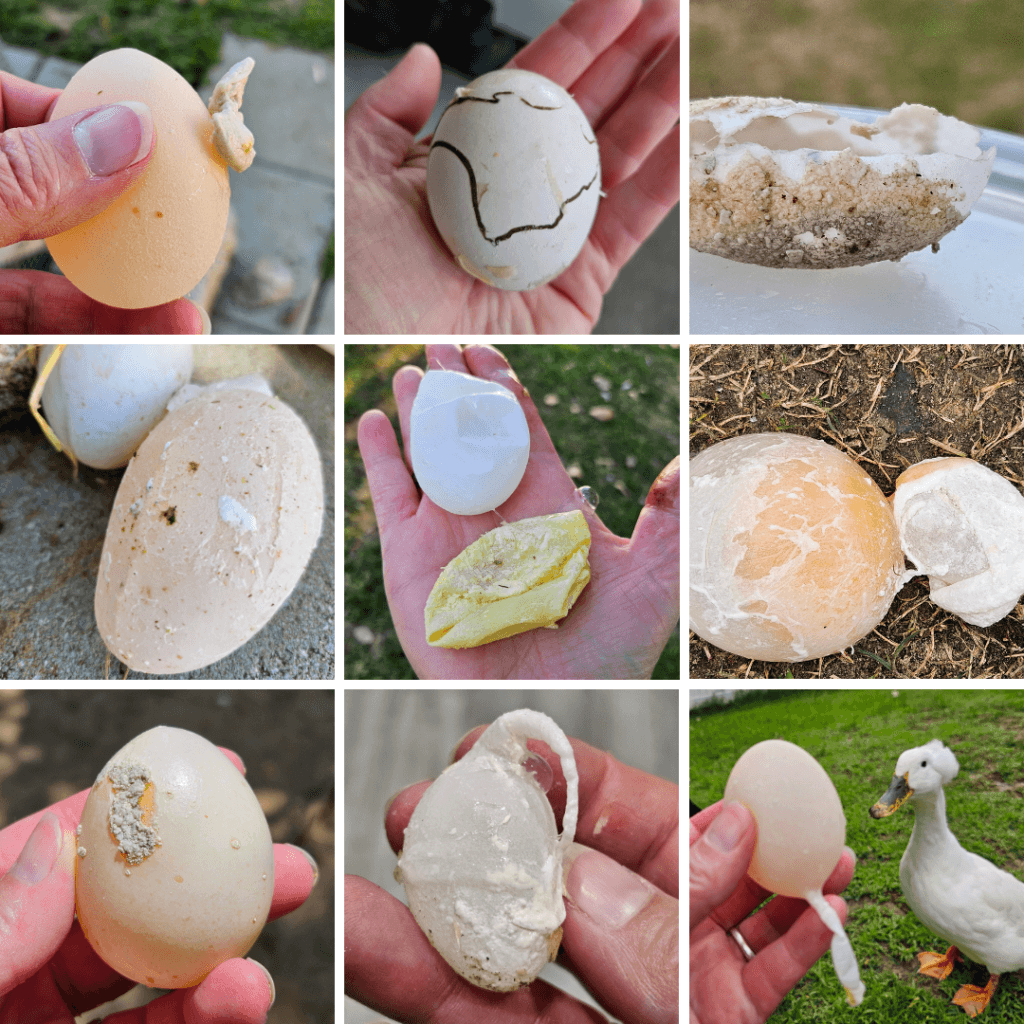
In this article, we’ll take a deep dive into what reproductive disorders look like in ducks, why they occur, and how we as duck parents can help prevent or manage them—with compassion, good husbandry, and veterinary care.
Ducks of Providence is free, thanks to reader support! Ads and affiliate links help us cover costs—if you shop through our links, we may earn a small commission at no extra cost to you. Thanks for helping keep our content free and our ducks happy! 🦆 Learn more
What Are Reproductive Issues in Ducks?
Reproductive issues can range from mild disturbances to life-threatening conditions. Some may be temporary, while others are chronic or progressive. They often result from the strain that frequent egg production places on a duck’s body.
Here are the most common types of reproductive problems:
Soft-shelled or Shell-less Eggs
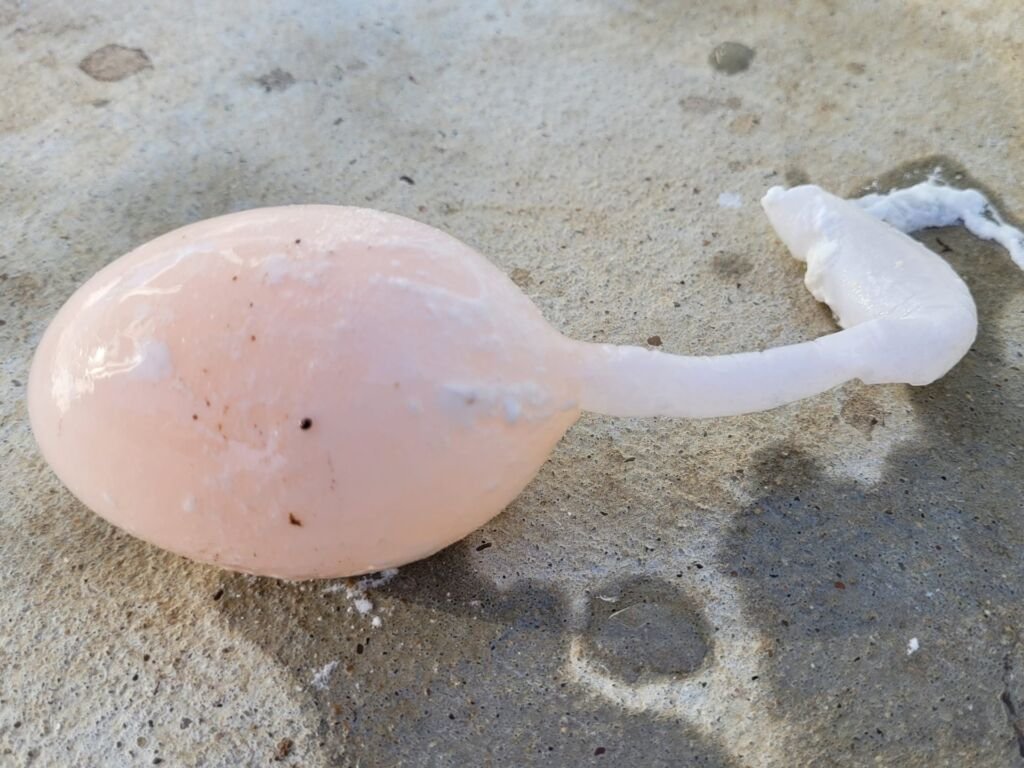
These fragile eggs lack the protective calcified shell normally applied in the shell gland (uterus). While sometimes caused by low calcium, they can also be due to shell gland dysfunction or hormonal issues—even when calcium levels are adequate. Soft eggs can rupture inside the oviduct or cloaca, leading to internal infection. In Krümel’s case, this happened silently, with eggs backing up and breaking inside her, triggering a serious bacterial infection. If you see membrane-like material in the nest or vent area, or your duck is straining without success, it may be due to a soft-shelled egg.
➡️ Read more about soft-shelled eggs.
Egg Binding

Egg binding occurs when an egg becomes stuck in the oviduct and the duck cannot pass it. It can be caused by oversized eggs, shell deformities, weakness, or inadequate calcium for muscle contractions. This is a medical emergency and requires urgent veterinary attention. Symptoms include a hunched posture, straining, heavy breathing, or complete inactivity. Warm baths and calcium injections may help in early cases, but vet care is always the safest route.
➡️ Learn more about egg-binding in ducks.
Egg Yolk Peritonitis
When yolk material enters the body cavity instead of exiting through the vent, it triggers a massive immune response and infection. This can happen after internal laying, soft egg rupture, or ectopic egg formation. The duck may show vague signs: decreased appetite, lethargy, or a swollen belly. If untreated, it can lead to septicemia and death. Diagnosis usually involves bloodwork and imaging, and treatment typically includes antibiotics and hormone implants to halt further laying.
Prolapsed Vent
A prolapse happens when the inner reproductive tissue protrudes outside the vent, usually after laying a large or malformed egg. It can be mild and self-resolving, or severe and life-threatening if not treated. This condition exposes delicate tissues to bacteria and can cause bleeding or pecking from other ducks. It requires immediate veterinary care—often involving cleaning, antibiotics, and sometimes surgical correction. Keeping the vent area clean and minimizing laying pressure can help prevent recurrence.
➡️ Learn more about prolapse in ducks.
Internal Laying
Internal laying means that eggs, yolks, or egg components are not properly laid through the vent but are instead retained and accumulate inside the abdomen. This can cause chronic discomfort, inflammation, and secondary infections. Ducks may not show signs until the condition is advanced, with noticeable swelling, difficulty walking, or signs of illness. Hormonal therapy is often used to halt egg production, and supportive care may be necessary for recovery.
Ectopic Eggs
Ectopic eggs are misrouted eggs that enter the digestive tract or coelomic (body) cavity instead of following the correct path through the reproductive tract. They may be caused by oviductal damage, reproductive misfiring, or hormonal imbalance. Ectopic eggs are difficult to detect without imaging and can cause gastrointestinal symptoms, infection, or fatal complications. Treatment involves stopping the laying cycle and managing the resulting inflammation or infection.
Lash Eggs
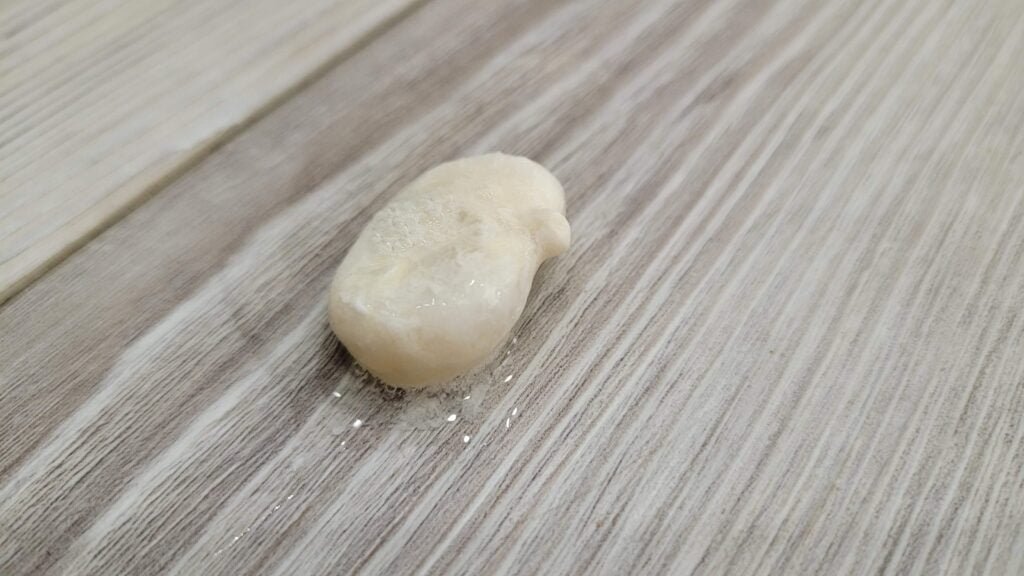
Lash eggs, also known as salpingitis masses, are not true eggs at all. They are accumulations of pus, tissue, and sometimes fragments of egg material that result from a chronic infection in the oviduct. These masses may resemble cooked egg or rubbery clumps and are a sign of a serious reproductive infection. Ducks passing lash eggs often appear ill, with symptoms like weight loss, lethargy, and reduced appetite. Veterinary treatment typically includes antibiotics and hormone implants to prevent further laying. In advanced cases, the condition can become chronic or fatal if not addressed early.
These issues are often interconnected. For example, laying frequent soft-shelled eggs increases the risk of egg binding, which can lead to internal laying or peritonitis if the egg ruptures.
Why Do Reproductive Issues Happen?
1. Genetics and Selective Breeding
Modern egg-laying ducks have been selectively bred to lay as many eggs as possible, as quickly as possible. Khaki Campbells, for example, can outlay even some chickens. But their bodies weren’t designed for this level of output over many years. Over time, this constant reproductive activity wears down the organs involved, increasing the risk of complications.
2. Hormonal Imbalance and Misfires
The laying process is hormonally driven. Even slight disruptions in hormone balance can cause eggs to be released before they’re fully formed or properly routed. Hormonal misfires may lead to eggs forming without shells, or being pushed into the wrong part of the body (e.g., the digestive tract), setting off a cascade of health problems.
3. Malfunction of the Shell Gland
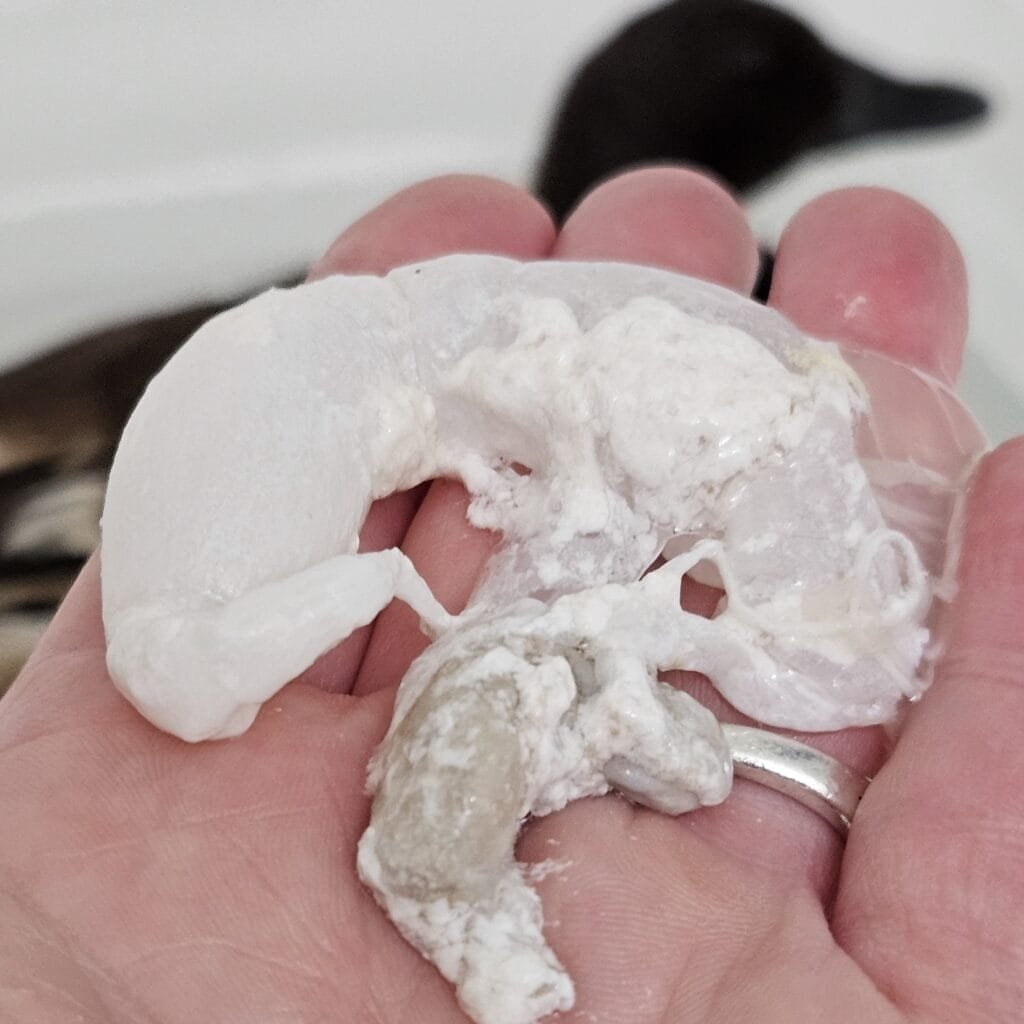
Also known as the uterus in birds, the shell gland is responsible for applying a calcified shell around the egg. When this gland is inflamed, infected, or just overwhelmed by constant activity, it may produce eggs with thin shells or none at all—even when dietary calcium is sufficient. Some ducks with perfectly balanced nutrition still lay defective eggs because their shell glands are simply overworked or damaged.
4. Inadequate Breaks from Laying
In nature, wild ducks only lay during breeding season and stop during molting or when brooding. Pet ducks, however, may continue laying nearly year-round—especially if their environment includes artificial lighting or consistent food supply. This endless cycle provides no opportunity for recovery, and the reproductive system becomes fatigued or damaged.
Signs Your Duck Might Be Having Reproductive Trouble
Knowing what to watch for can make a big difference. Many signs of reproductive distress mimic other illnesses, but here are some red flags that specifically point to reproductive issues:
- Walking stiffly or waddling with an unusual gait
- Lethargy, especially in a typically active duck
- Spending more time in the nesting area or appearing to strain
- A visibly swollen or tender abdomen
- Soft-shelled eggs, messy feathers near the vent, or yolk-like discharge
- Drop in egg production or sudden cessation
- Fluffed-up feathers, closed eyes, and decreased interest in food or water
If your duck is showing these signs, she needs to be evaluated by an avian or poultry-experienced veterinarian as soon as possible.
| Condition | Common Symptoms | Potential Treatment |
|---|---|---|
| Soft-shelled or shell-less eggs | Straining, membrane-like material in vent, yolky discharge | Vet exam, antibiotics, calcium support, hormone implant |
| Egg binding | Straining, lethargy, hunched posture, no egg passed | Immediate vet care, warm baths, calcium, possible surgery |
| Egg yolk peritonitis | Swollen belly, lethargy, reduced appetite, vague illness | Antibiotics, hormone implant, supportive care |
| Prolapsed vent | Visible tissue outside vent, bleeding, vent pecking | Veterinary cleaning, antibiotics, surgery if severe |
| Internal laying | Swollen abdomen, waddling, lethargy, reduced appetite | Hormone implant, antibiotics, imaging, supportive care |
| Ectopic eggs | Gastrointestinal distress, swelling, internal infection | Stop laying with hormone implant, treat infection |
| Lash eggs | Rubbery egg-like masses passed, weight loss, chronic illness | Antibiotics, hormone implant, treat infection |
How to Help a Duck with Reproductive Issues
Supportive care at home is important, but it must go hand in hand with veterinary treatment. Here are several ways to give your duck the best chance at recovery and prevention:
1. Provide Calcium Support
Calcium is essential for healthy egg formation and proper muscle contractions in the reproductive tract. If a duck is actively laying, especially soft-shelled eggs, offering free-choice crushed oyster shell helps her regulate calcium intake. For ducks with binding issues or shell gland malfunction, a more direct supplement like Avian Calcium with D3 can provide fast-acting support—especially during an emergency. Always consult your vet before administering direct supplements to ensure proper dosage.
Oyster Shells
Give your ducks the calcium they need for strong bones and sturdy eggshells! As a valued Ducks of Providence community member, you get an exclusive 15% off Scratch and Peck Oyster Shells—plus, the discount applies to all their other products too! Just use code PROVIDENCE15 at checkout and start giving your flock the best. Don’t miss out—grab your savings today!
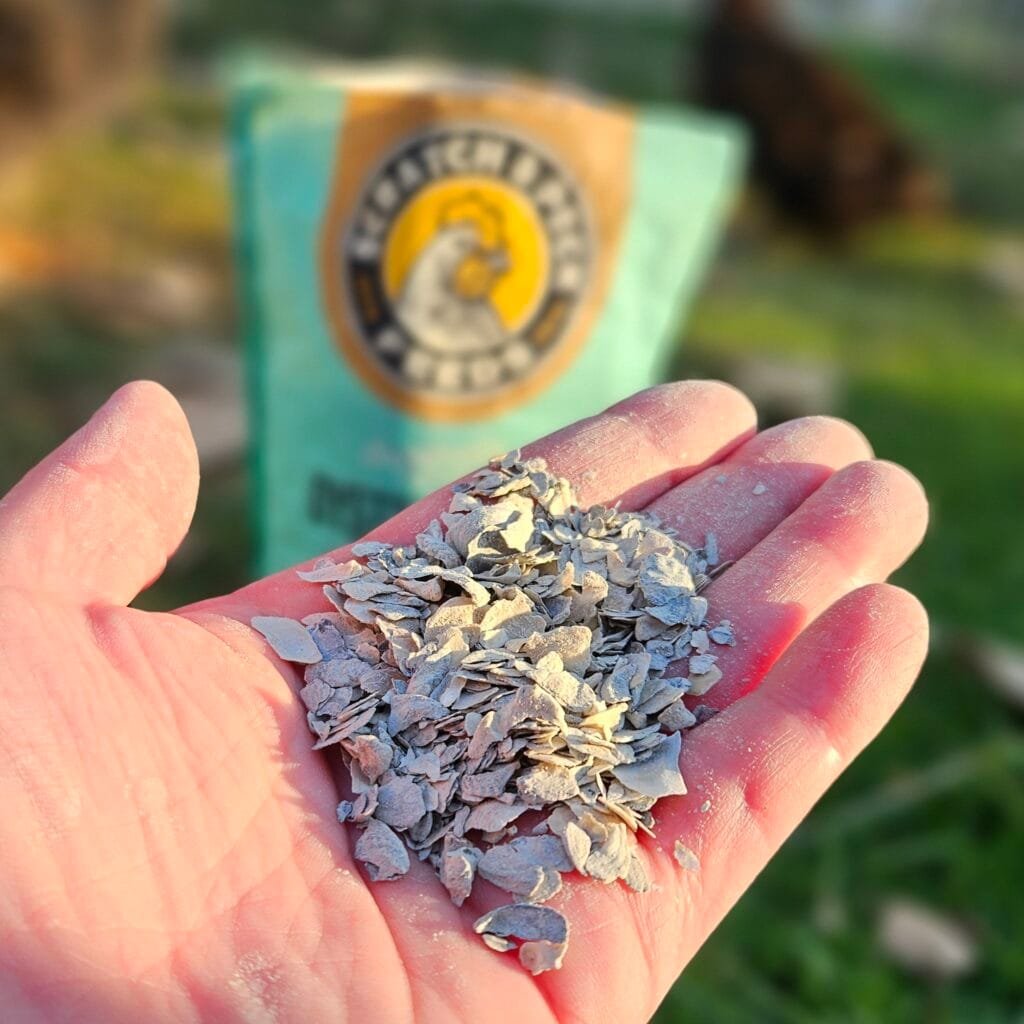
2. Hormone Implants
Hormonal implants like Deslorelin acetate (Suprelorin) or Leuprolide acetate are used to suppress the reproductive cycle in ducks. These implants reduce or stop egg production for several months, allowing the reproductive system to rest and heal. They are administered by a veterinarian and placed just under the skin. While not a permanent solution, they can be repeated as needed. For ducks with recurring or chronic reproductive problems, hormone implants can be life-saving. If your duck has a history of internal laying, egg binding, or peritonitis, discuss this option with your vet early on.

We’ve used hormone therapy in our flock with great success. While it’s not cheap, it was a lifesaver for our baby girl Krümel.
➡️Lern more about hormone implants and how they work.
3. Adjust Light Exposure
Egg-laying is strongly influenced by light exposure, or photoperiod. By reducing your duck’s daily light exposure to 8–10 hours, you can help slow down or even stop egg production naturally. Use blackout curtains in your duck house to block early morning and late evening light, or bring your ducks inside earlier during long daylight periods. If your coop uses artificial lighting, turn it off at night unless it’s needed for safety or health reasons. Creating a more natural light cycle can reduce reproductive strain.
4. Reevaluate the Diet
Diet plays a critical role in egg production. Switch to a maintenance feed (instead of layer feed) if your duck is no longer actively laying or if you are trying to reduce reproductive activity. Layer feed contains high calcium and protein, which encourages laying. Instead, provide calcium—such as oyster shells or crushed eggshells—in a separate dish so that only ducks who need it will consume it. Avoid adding calcium directly to the feed for the entire flock. Keep an eye on protein levels, too, as high-protein treats can also stimulate laying.
➡️ Learn more about the nutritional needs of ducks.

🍽️ Mazuri Waterfowl Maintenance Feed
Mazuri’s Maintenance Diet is a great alternative to layer feed for ducks that are no longer laying or need a break. It’s nutritionally complete without excess calcium or protein, making it ideal for older ducks or those recovering from reproductive issues. Bonus: Many ducks actually enjoy it!
5. Encourage Broodiness (If Safe)
Some ducks will naturally stop laying if they go broody. Encouraging broodiness can be a useful strategy for reducing egg production temporarily, but it doesn’t work with every duck or breed. To encourage broody behavior, offer a dark, quiet nesting area and place ceramic or wooden eggs in the nest. Monitor your duck closely to ensure she continues to eat and drink. If she stops caring for herself, or if brooding causes more stress than benefit, remove the fake eggs and gently interrupt the behavior. Only attempt this approach if your duck is in otherwise good health.
➡️ If you want to read more about making your duck broody, visit our friends at Tyrant Farms. They have written an excellent post about this topic.
🥚 Ceramic Nest Eggs
Encouraging broodiness can help stop a duck from laying and give her reproductive system a break. These ceramic eggs are realistic in weight and size, and unlike plastic ones, they stay put and feel more natural to your duck. Place a few in a dark nesting area to see if she’s inclined to sit.
👉 Check it out on Amazon
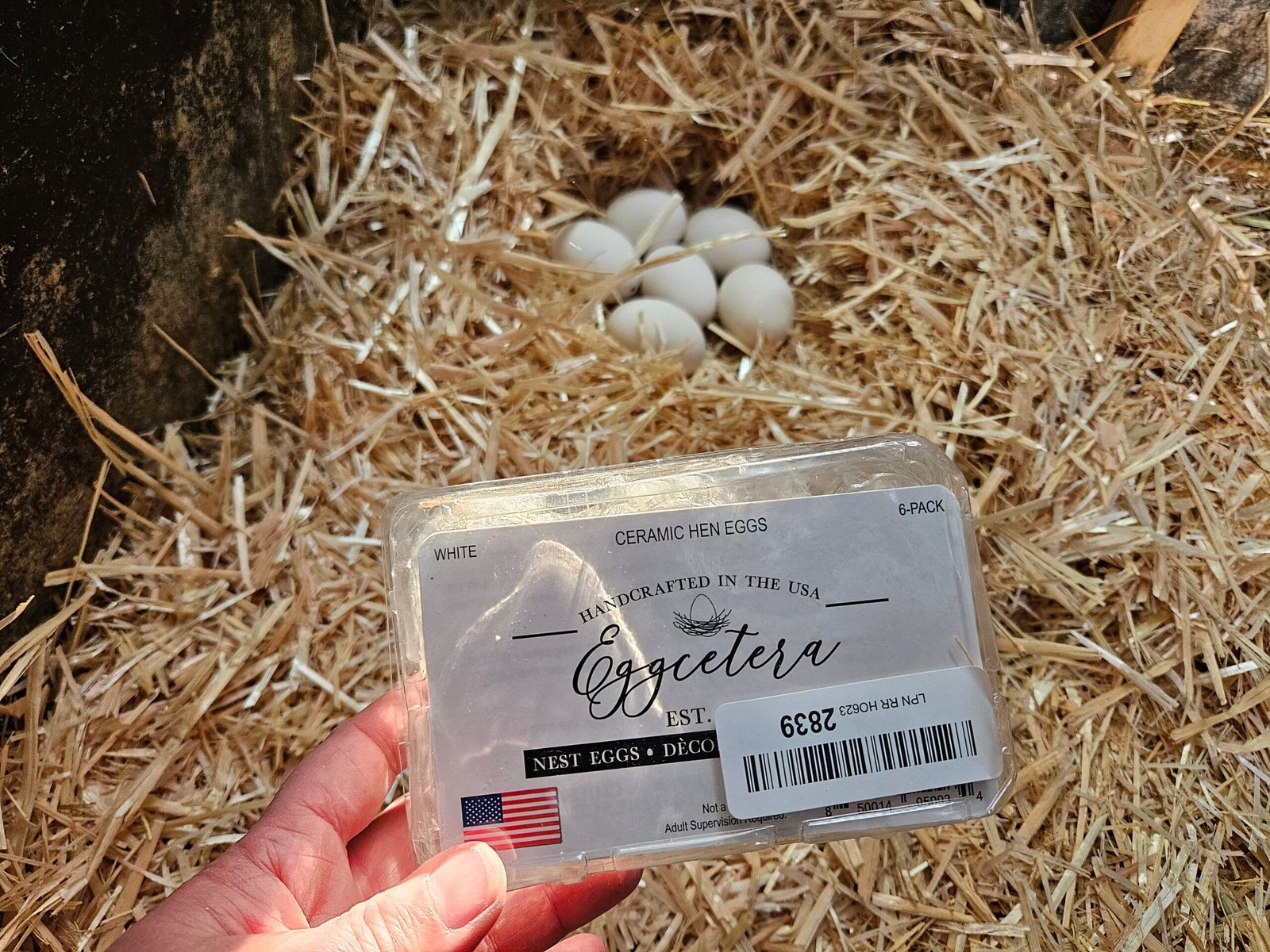
6. Work with a Vet on Supportive and Emergency Care
Many reproductive issues require medical treatment. If your duck shows signs like lethargy, straining, or a swollen abdomen, consult a veterinarian right away. Treatment may include antibiotics to fight infection, calcium supplements to assist egg passage, anti-inflammatories for pain and swelling, or hormone implants to stop laying. In some cases, imaging such as X-rays or ultrasounds may be necessary to diagnose conditions like internal laying or egg yolk peritonitis. For milder cases of egg binding, a warm bath and quiet rest can help, but do not delay veterinary care if symptoms persist or worsen.
➡️ Don’t know where the nearest avian vet in your area is? Check the vet finder on Duck DVM or the Association of Avian Veterinarians.
Krümel’s Case: A Personal Story
Krümel, one of our beloved pet ducks, began showing signs of trouble shortly after her second birthday. She was quiet, not interested in food, and her posture had changed. Knowing how subtle reproductive issues can be, we took her to our avian vet right away.
Bloodwork revealed elevated white blood cells (suggesting infection), abnormal pancreatic enzyme levels, and—most alarmingly—high levels of zinc, a possible sign of metal poisoning. An X-ray did not reveal any obvious metal object, but her symptoms were consistent with internal inflammation. Our vet suspected that she had either ingested something toxic or was suffering from a combination of reproductive distress and early systemic infection.

Krümel received antibiotics for three weeks and underwent chelation therapy for the zinc levels in three 10-day rounds. She also required a new hormone implant to shut down egg production. While we couldn’t definitively identify the trigger, we believe her reproductive system was already struggling, and the added burden of a hidden toxin or infection pushed her over the edge.
For a while, Krümel did very well. However, more recently she began to show symptoms again. This time, her zinc levels were normal, but she became lethargic, stopped eating, and her belly appeared swollen. Since she hadn’t laid for a while, we didn’t immediately suspect a reproductive issue—until we realized she had started laying again, but the eggs weren’t coming out.
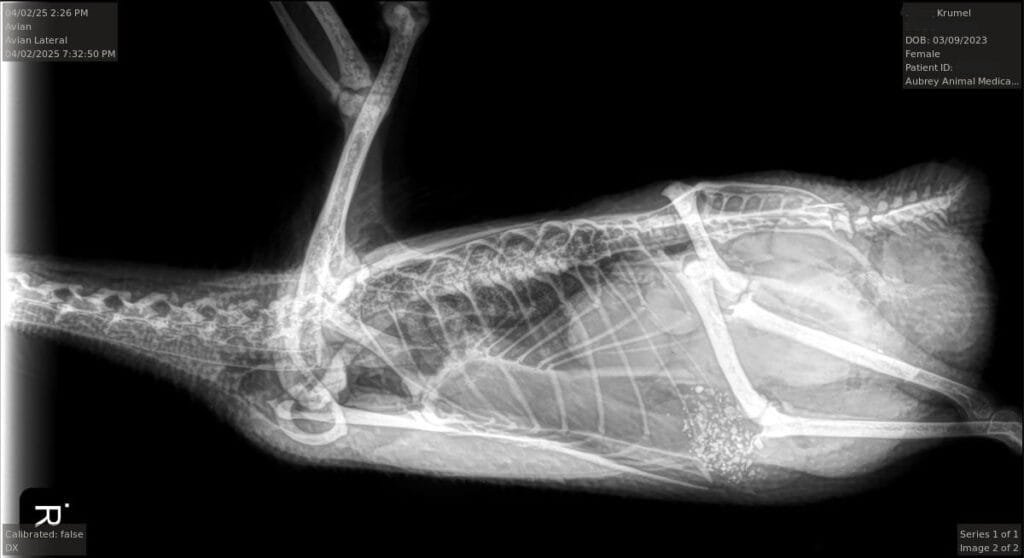
X-rays revealed a few soft-shelled eggs piling up inside her. Some of them had broken, leading to a serious infection. She began passing a foul-smelling mix of egg yolk and pus through her droppings. Our vet prescribed antibiotics again, and thankfully, Krümel has stabilized and is doing well for now.
Thanks to early intervention and ongoing support, Krümel recovered—but her case is a reminder that even with the best care, reproductive issues can appear quickly and escalate fast.
Frequently Asked Questions (FAQ)
How do I know if my duck is egg bound?
Look for signs like straining, lethargy, a swollen belly, or sitting in the nesting area without laying. If you suspect egg binding, see a vet immediately.
Can a duck die from laying too many eggs?
Yes, overproduction can lead to serious complications like egg yolk peritonitis or internal laying, which can be fatal if untreated.
Are hormone implants safe for ducks?
When administered by an experienced veterinarian, hormone implants like Deslorelin or Leuprolide are safe and can be life-saving for ducks with chronic reproductive issues.
What’s the difference between layer feed and maintenance feed?
Layer feed contains higher calcium and protein levels to support egg production. Maintenance feed has lower levels, making it safer for ducks who aren’t laying or who need a break from laying.
Should I stop giving my duck oyster shell?
Only provide oyster shell as a free-choice supplement in a separate dish. Ducks that are not laying should not consume extra calcium.
Can I make my duck go broody to stop laying?
Some breeds can be encouraged to go broody with nesting setups and fake eggs. However, this doesn’t work for all ducks and should only be done if the duck is healthy.
Final Thoughts
As duck parents, we all want to give our girls long, healthy, comfortable lives. Understanding the unique challenges they face—especially those related to egg-laying—is part of that responsibility.
If your duck is showing signs of reproductive distress, trust your instincts and seek help early. With hormonal tools, careful husbandry, and a good vet on your team, many ducks can go on to live full, happy lives—even with a history of reproductive problems.
Related Articles
- The Science Behind Duck Egg Laying Process: From Ovulation to Oviposition
- Soft-Shelled Eggs in Ducks – Everything You Need to Know
- Breaking Down Egg Binding in Ducks: What Every Duck Keeper Should Know
- Hormone Implants for Ducks: Leuprolide Acetate and Deslorelin Acetate
- Krümel’s Health Journey (Case Study)
- How We Saved Our Egg-Bound Duck (Case Study)
- How We Treated Our Egg-Bound Duck Penny (Case Study)


